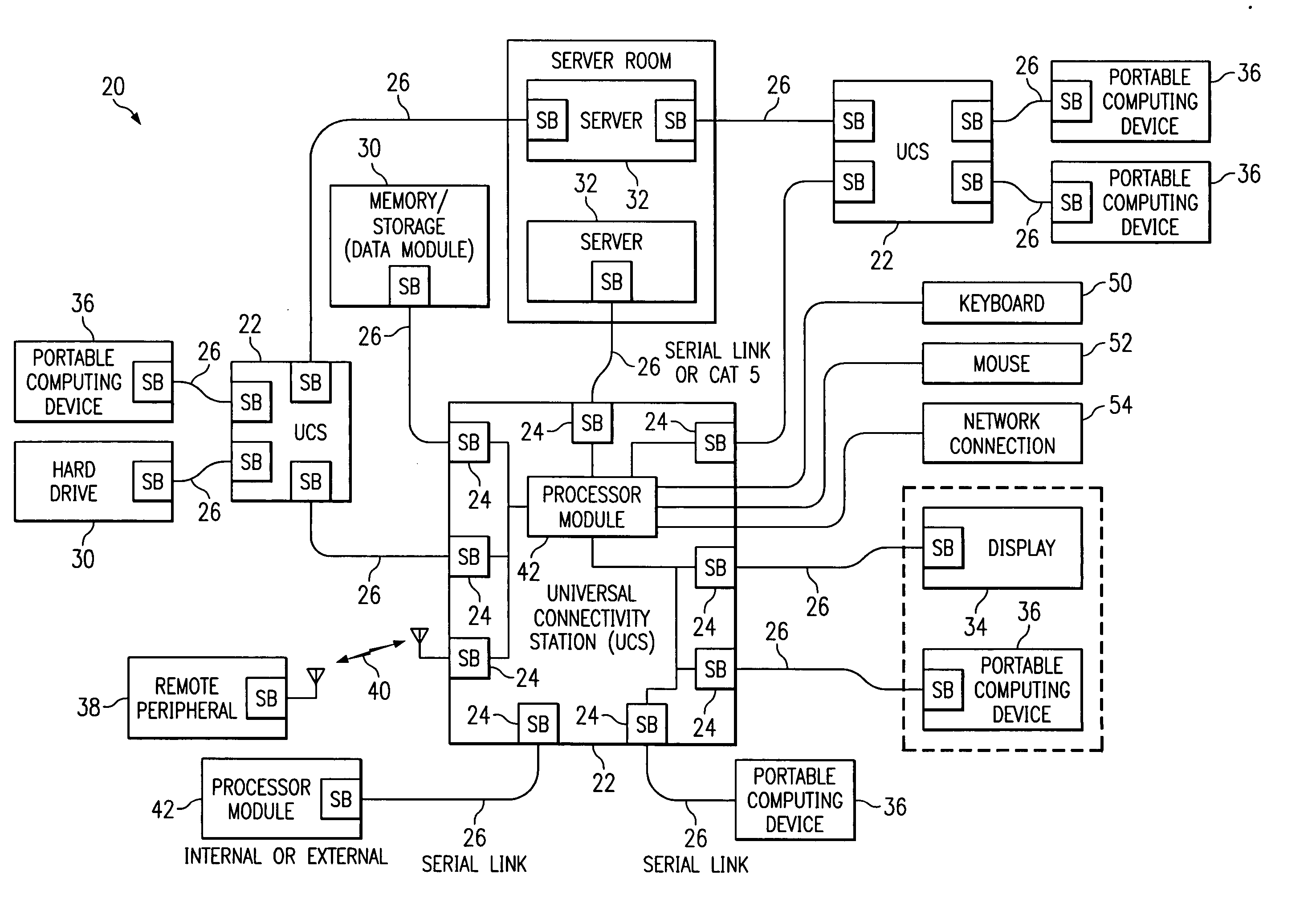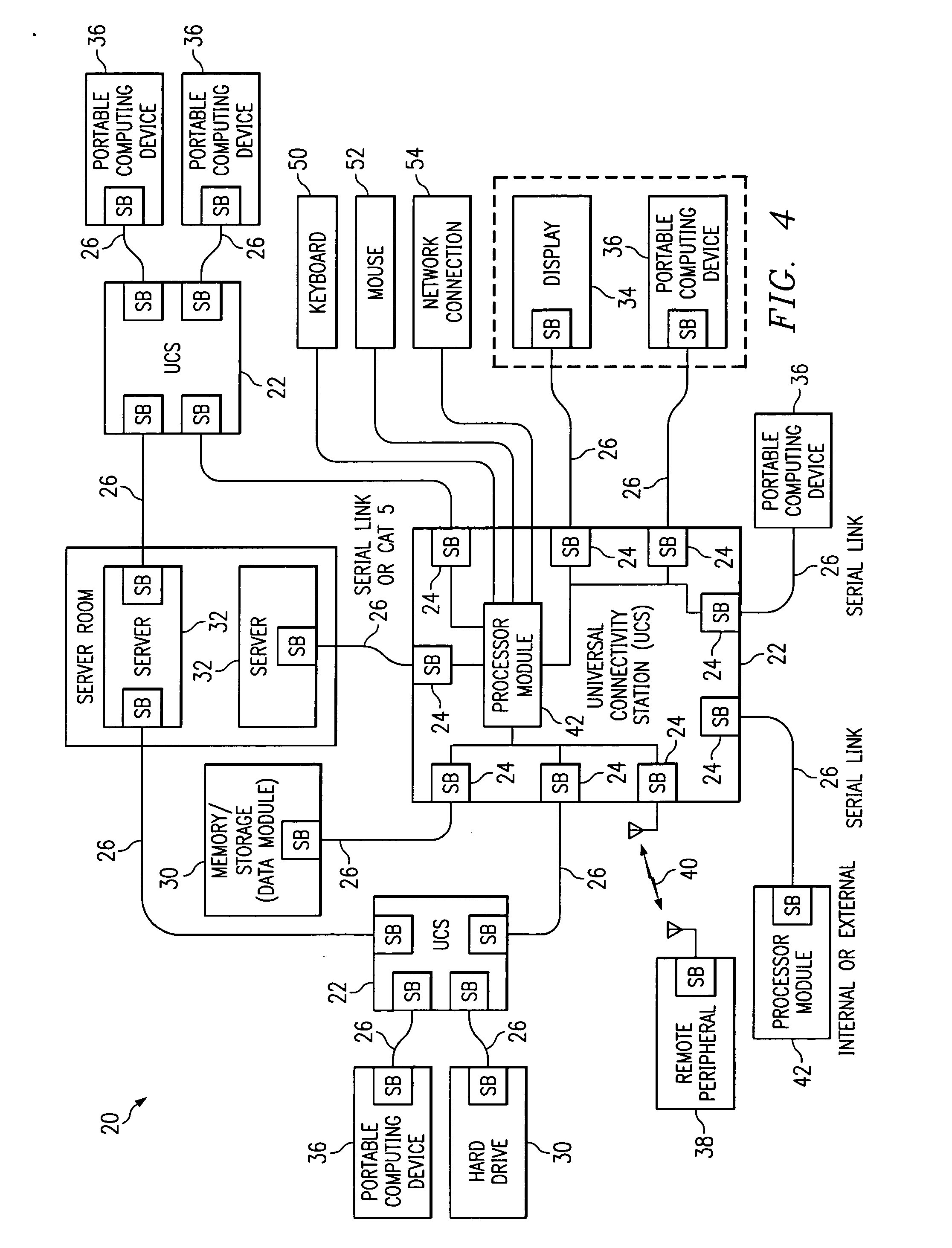Modular presentation device with network connection for use with PDA's and Smartphones
a technology of pda and network connection, applied in the field of computer and data processing systems, can solve the problems of reducing and reducing the ability to extend the pci bus more than, so as to achieve the effect of increasing the performance of key components
- Summary
- Abstract
- Description
- Claims
- Application Information
AI Technical Summary
Benefits of technology
Problems solved by technology
Method used
Image
Examples
Embodiment Construction
Referring to FIG. 3, there is depicted the proprietary Split-Bridge™ technology serial communications technology of the present applicant, discussed in great detail in commonly assigned U.S. patent applications Ser. No. 09 / 130,057 filed Jun. 6, 1998, and Ser. No. 09 / 130,058 also filed Jun. 6, 1998 the teachings of which are incorporated herein by reference.
Applicant Split-Bridge™ technology revolutionizes the status quo for computer systems. The Split-Bridge™ technology does not require the need for custom hardware or custom software to achieve full performance serial communication between devices, including devices having parallel data buses including the PCI bus. In fact, for each device in a modular computer system, the Split-Bridge™ technology appears just like a standard PCI bridge, and all software operating systems and device drivers already take such standard devices into consideration. By utilizing standard buses within each device operating within the modular computer s...
PUM
 Login to View More
Login to View More Abstract
Description
Claims
Application Information
 Login to View More
Login to View More - R&D
- Intellectual Property
- Life Sciences
- Materials
- Tech Scout
- Unparalleled Data Quality
- Higher Quality Content
- 60% Fewer Hallucinations
Browse by: Latest US Patents, China's latest patents, Technical Efficacy Thesaurus, Application Domain, Technology Topic, Popular Technical Reports.
© 2025 PatSnap. All rights reserved.Legal|Privacy policy|Modern Slavery Act Transparency Statement|Sitemap|About US| Contact US: help@patsnap.com



